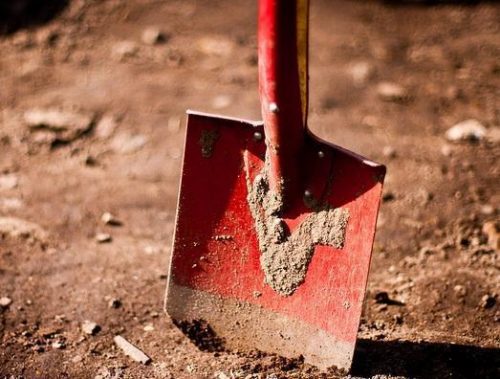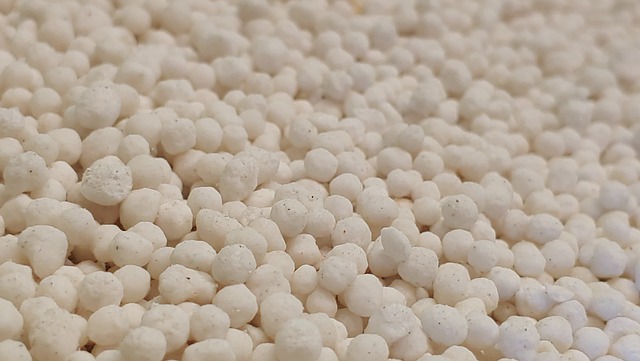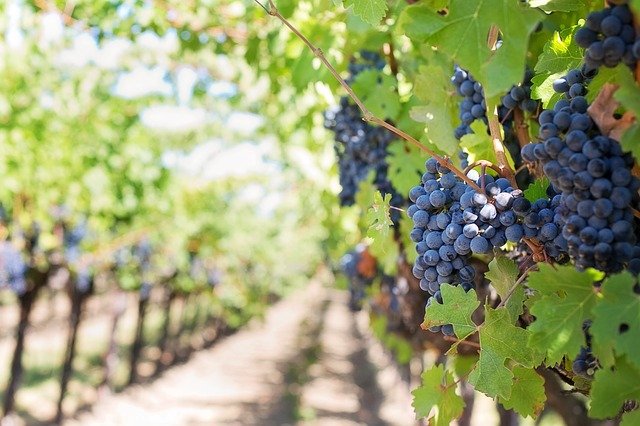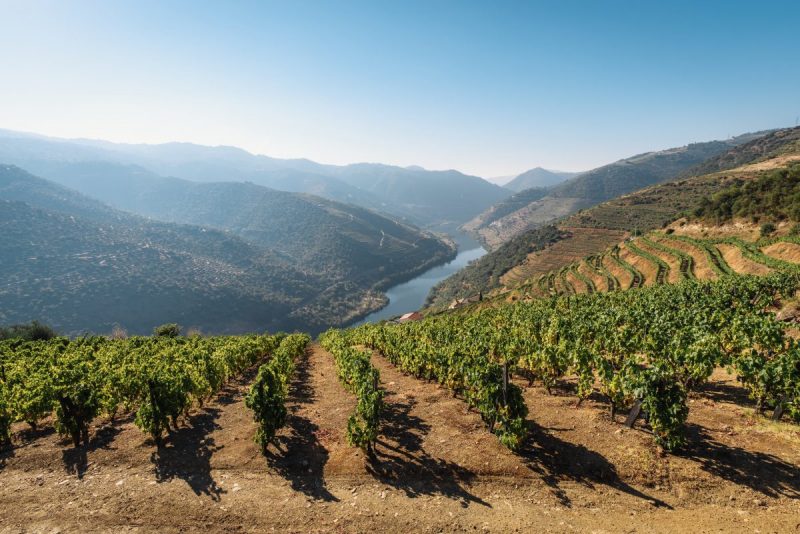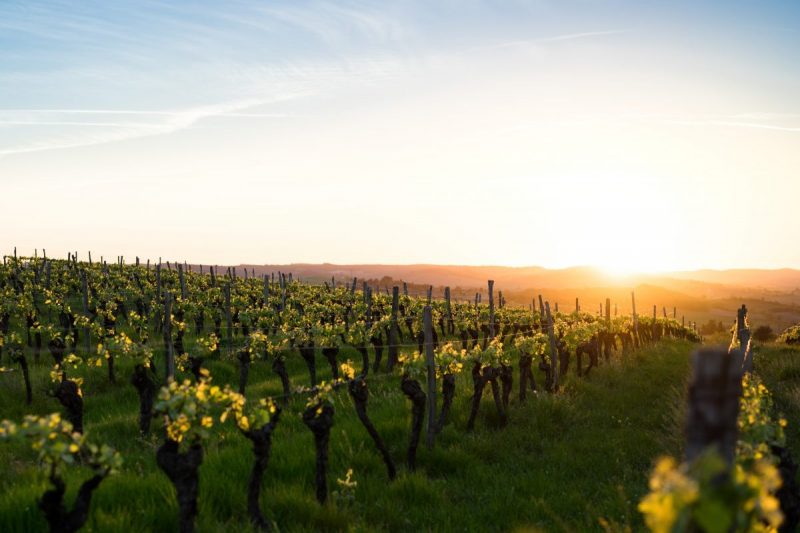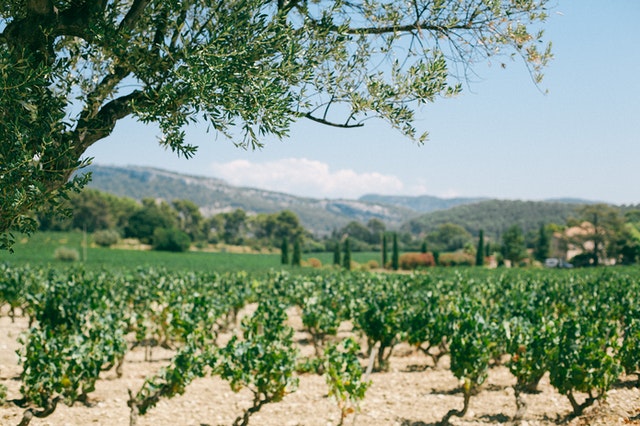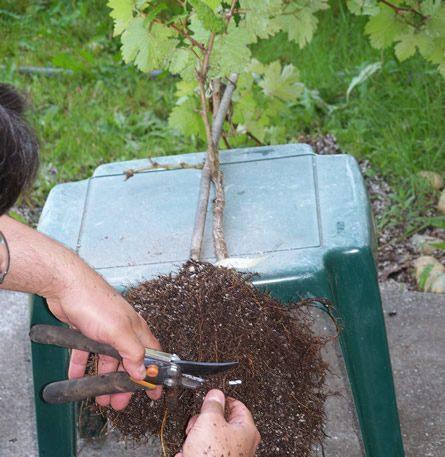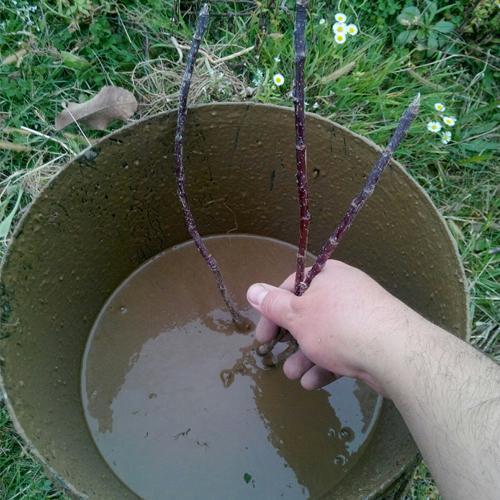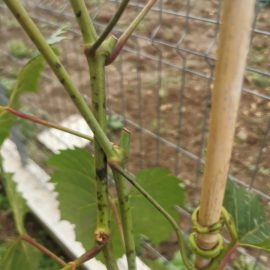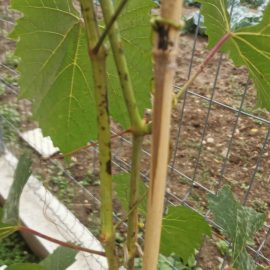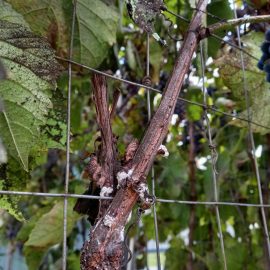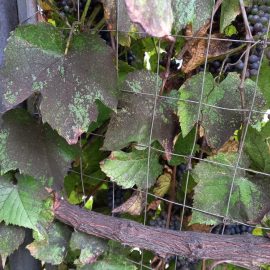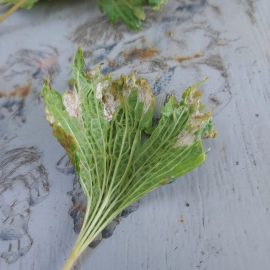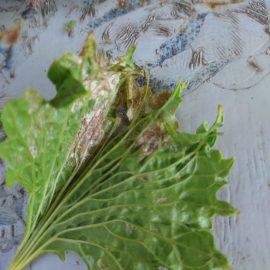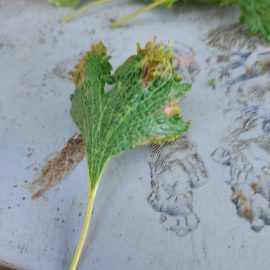Vineyard – Plantation establishment and care guide
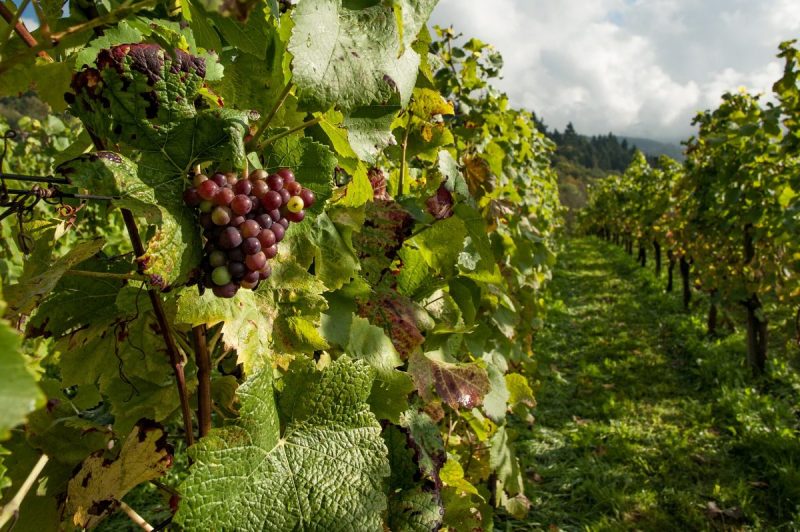
The establishment of a vineyard is a complex process, which primarily involves a significant investment, but special attention must also be paid to the compliance with the technological steps, in order to reach a uniform grapevine planting operation and plantation, with vigorous stumps and to be able to maximize the production potential of the chosen variety.
Grapevines are cultivated in three systems of cultivation (unprotected, semi-protected and protected), with distinct characteristics, these systems being determined by: the cultivated varieties, chosen growth forms, environmental factors and the applied cultivation techniques.
The unprotected cultivation system is characteristic in regions where the minimum winter temperatures affecting the grapevine (below -18ºC for table grapes and below -20ºC for wine grapes) occur very rarely, in maximum 1 or 2 years out of 10. The distinctive characteristics of this system are that the stumps are grown on semihigh or tall stems whilst the fruiting elements are located at heights varying between 0.6-1.2-2m compared to ground level.
The semi-protected cultivation system is found in climatic zones where the minimum temperatures affecting grapevines have a frequency of 2-4 years out of 10. Thus, during winter, protection is ensured by partially covering with soil some elements located at the base of the stump. This system of cultivation can be distinguished by the use of varieties with increased resistance to frost, semihigh and tall forms of stump growth, and by keeping every year, at the base of the stem, 1-2 renewal spurs with two buds. In autumn, to protect them from frost, the annual shoots that grow on these spurs are led in the direction of the row and covered with a layer of soil.
The protected cultivation system is a much more labour-intensive and costly system and is mainly practised in certain micro-areas within vineyards (e.g. at the foot-slopes). It is used in areas where winter temperatures affecting grapevines have a higher frequency (compared to other systems) of more than 4 out of 10 years. The form of growth of the stumps used within this system is the low one, which allows covering them totally or partially with soil for the winter.
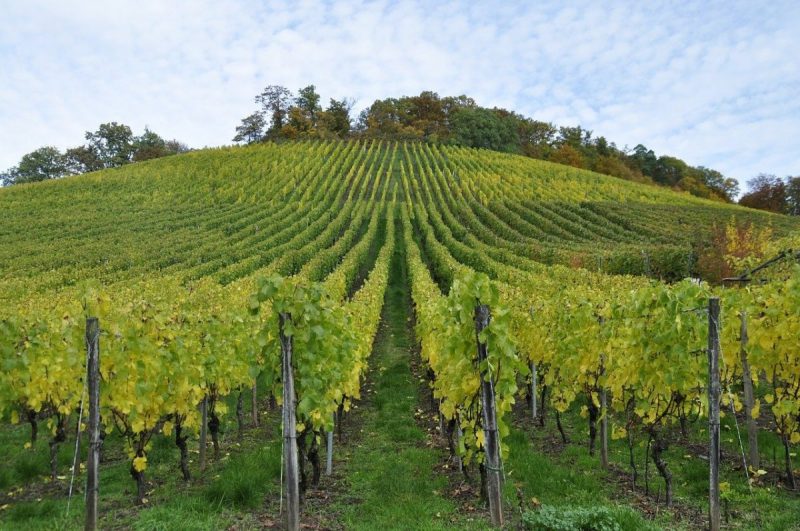
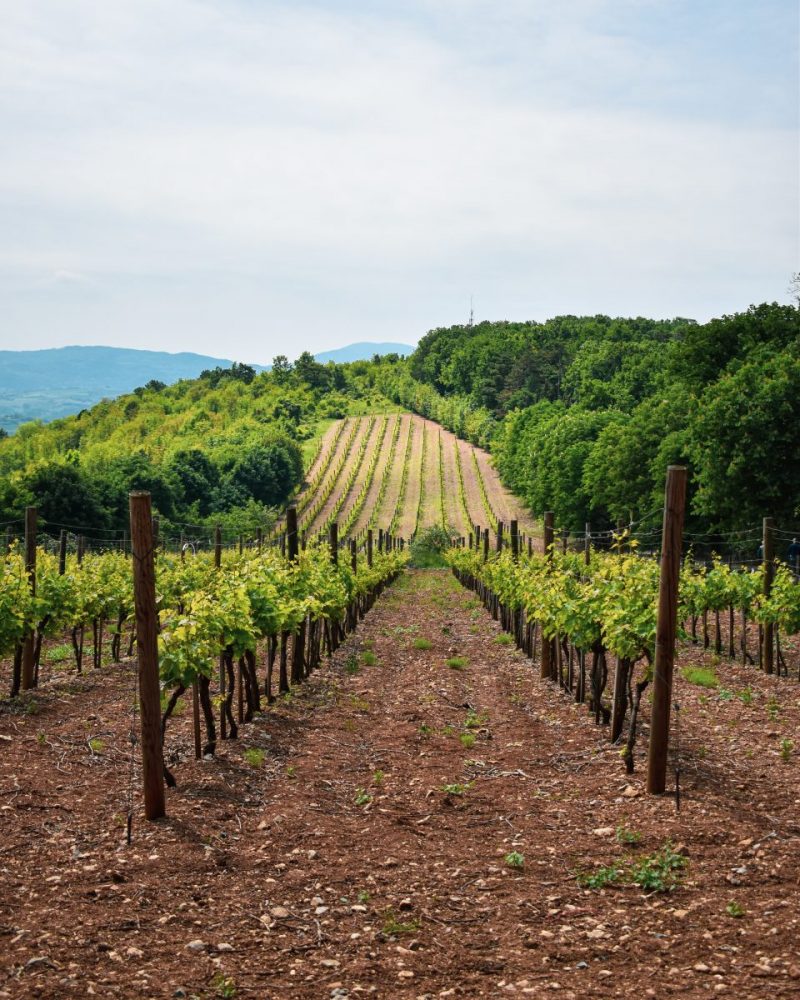
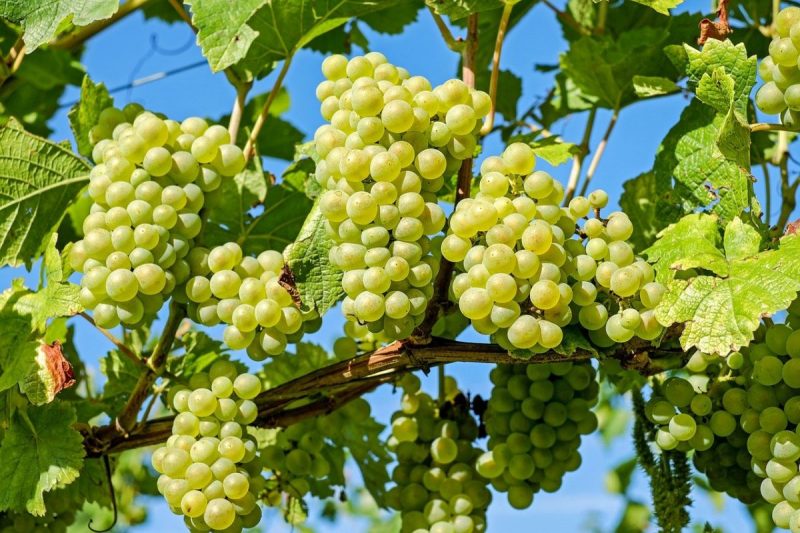
Types of vineyards
Nowadays, there are five types of vineyards, which are determined by: the distances used during grapevine planting, the density of planting, the forms of growth of the stumps, the slope of the land, but also by the possibility of mechanization of the terrain.
Thus, the following are distinguished:
- regular vineyards (moderate slope, below 15%, grapevine planting distances – 2.2 m between rows and 1-1.4 m between stumps per row, with normal densities), suitable for both table and wine grape varieties. The growth forms used can be both low, semihigh and high, this being the most common type.
- vineyards with large distances (flat or gently sloping (8%) terrain, grapevine planting distances 3-3.6 m between rows and 1.2-1.4 m between stumps per row, lower densities), being suitable for table varieties and those of high productivity for current consumption wines. The growth forms used are the tall ones.
- vineyard plantations on terraces (land with steep slopes, 12-14%, low fertility soils, grapevine planting distances 2 m between rows, 1 – 1.4 between stumps per row), where are mainly cultivated varieties for qualitative wines (white and red), the used form of growth of the stumps is semihigh.
- vineyard plantations on sands (grapevine planting distances greater than 2.5 m between rows and 1 – 1.4 m between stumps per row, medium densities, low, high and semihigh growth forms), where are mainly cultivated varieties for table wines (rosé, white) and varieties for table grapes with high or medium vigour. These are regional in character.
- family-owned vineyards (established on smaller areas of land, with grapevine planting distances of 1.5 – 1.8 m between rows and 1 – 1.4 m between stumps per row, with high planting densities), where are cultivated grape varieties for wine, but also varieties of table grapes.
Selection of vineyard planting sites
When choosing the land for the vineyard plantations, it is important to take into account some key aspects, as the terrain must optimally ensure the growth and fructification requirements of the cultivated varieties, in order to maximize their potential, both quantitatively and qualitatively. At the same time, it is also important for the terrain in question to meet certain conditions, such as:
- have the possibility to be connected to essential utilities (water, electricity, etc.);
- to be located well away from polluted areas;
- to be located near areas that can serve as marketplaces;
- be accessible to the workforce.
Considering the specific requirements of the vine, it is necessary to avoid areas that are frequently affected by various climatic phenomena (hail, late frosts, prolonged droughts, etc.) or those which have an excess of moisture or an excess of calcium carbonate or soluble salts, as well as those that have the groundwater level located at shallow depths (1-2 m). Also, as vines make use of land that is not suitable for other crops, sandy, stony, hillside soils should be chosen.
Land preparation
The main works to be applied to the land in order to prepare it for grapevine planting are deforestation and levelling of the land, a period of soil rest and fertilization.
Deforestation. It represents the elimination of woody vegetation existing on the land (trees, stumps, thick roots, etc.) and it is performed with tractors equipped with specific machinery (bulldozer blade, scarifying claw, etc.). If a vineyard plantation existed on the land in question, which has been affected by various diseases, the stumps will be completely removed (with the maximum number of roots that can be pulled out) and the soil rest period will be ensured. Also, in the case of deforestation of the older plantations, all the roots of the vines existing on the land in question should be collected, removed and destroyed by burning, in order not to represent a source of the perpetuation of pathogens in the new plantation.
Levelling (shaping) of the land. This operation is performed after deforestation and is very important because the presence of unevenness on the land represents an inconvenience in the execution of certain activities, such as installation of irrigation systems, evacuation of excessive moisture, combating soil erosion, and also influences an uneven growth and development of vine stumps. Soil levelling is carried out according to the relief conditions, landscaping system, parcelling possibilities as well as land configuration.
Resting period of the soil. In general, land on which a vineyard has been established for a long period of time is cultivated for a certain period (3-5 years) with forage plants (perennials or annuals) in order to restore the soil structure and fertility, but also as a phytosanitary measure (to avoid the transmission of specific diseases and pests from the old plantation). Usually, this resting period of the soil is about three to four years.
Land fertilisation
The lands on which vines are cultivated are sloping, sandy, eroded lands, unsuitable for other crops, usually with a low nutrients content, therefore, it is necessary to fertilize the land to ensure, at first, an average level of nutrients supply. Specific fertilizers will be applied, the doses being established according to the results of soil analysis.
Recommended products
-
You can find products on a different store
Change Store -
You can find products on a different store
Change Store -
You can find products on a different store
Change Store -
You can find products on a different store
Change Store -
You can find products on a different store
Change Store -
You can find products on a different store
Change Store -
You can find products on a different store
Change Store -
You can find products on a different store
Change Store -
You can find products on a different store
Change Store -
You can find products on a different store
Change Store -
You can find products on a different store
Change Store -
You can find products on a different store
Change Store -
You can find products on a different store
Change Store -
You can find products on a different store
Change Store -
You can find products on a different store
Change Store -
You can find products on a different store
Change Store -
You can find products on a different store
Change Store -
You can find products on a different store
Change Store -
You can find products on a different store
Change Store -
You can find products on a different store
Change Store -
You can find products on a different store
Change Store -
You can find products on a different store
Change Store -
You can find products on a different store
Change Store -
You can find products on a different store
Change Store
Selection of varieties
It is a very important factor for the establishment of plantations because the variety is the main factor that ensures the productivity level as well as its quality. Each variety has certain specific requirements in relation to the environmental conditions, therefore, their selection, as well as their location, must be performed with great care, in order to meet the requirements of the variety in the best possible way and to ensure its maximum production potential. Varieties are selected mainly in accordance with the production direction. Among the main varieties grown in the wine-growing areas, by production direction, the following are mentioned:
- varieties of table grapes with early (Victoria, Cardinal), medium (Muscat Hamburg, Chasselas doré), late (Afuz Ali, Italy) ripening;
- varieties for white wines: table wines (Feteasca regală, Aligoté, Plavaie), superior wines (Feteasca Albă, Feteasca regală, Pinot Gris, Chardonnay, Sauvignon);
- varieties for red wines: table wines (Oporto, Băbeasca neagră), superior wines (Merlot, Pinot noir, Cabernet Sauvignon);
- varieties for sparkling wines: Feteasca regală, Feteasca albă, Pinot noir;
- varieties for aged distillates: Plavaie, Feteasca regală, Mustoasa de Maderat.
The placement of varieties on sloping land is realized as follows:
- At the bottom of slopes, as well as on more fertile soils – table varieties and for current consumption wines;
- On slopes with favourable exposures and on less fertile soils – varieties for superior white and red wines;
- On plateaus and at higher altitudes – the raw material for making aged wine distillates and sparkling wines.
Establishment of planting distances
The level of production, its quality, as well as production costs are influenced by the distances between rows and between plants per row, which determine the planting density (number of stumps per unit area), therefore the selection of optimal planting distances is an important link in the process of establishing vineyards.
Planting density is influenced by a number of elements: growth form, the direction of production, soil fertility, climatic conditions, the vigour of fruitful varieties, as well as vigour of rootstocks used for grafting, and buds load at cutting.
Depending on the area, different planting distances are used, ranging from 1.0/1.0 to 1.8/1.8 m, but they can also be different depending on the vigour of the variety. For example, on terraced slopes, low fertility soils, with low and medium vigour varieties, planting distances between rows are about 2 m and between plants per row – 1.0 – 1.2. The establishment of planting distances is a complex procedure that is based on several criteria (possibilities of mechanization of the work, type of vineyard, biotope conditions, etc.), therefore, it is recommended also to consult specialized literature for the choice of an optimal distance, depending on the growth and fruiting characteristics of the chosen variety.
Picketing of the terrain
It is a process of marking on the ground, the place that each vine will occupy in the plantation, using stakes (50-60 cm long), called pickets. Terrain picketing can be done at the end of winter for spring plantings, or at the beginning of autumn for autumn plantings after the terrain has been levelled.
Prior to the picketing, planting distances, row orientation and picketing system will be determined. Correct execution of the picketing process ensures straight rows, continuous from one parcel to another, equal space for each stump, and long working lengths for the aggregates. The orientation of the rows is realized in such a way as to fulfil the light requirements of the plants and to help prevent soil erosion in case of sloping lands.
The picketing system commonly used is the ”rectangle” system, where the distance between rows is greater than the distance between vines per row.
The materials required for this purpose are:
- theodolite (for large areas or sloping terrains);
- coloured pegs (red or white) for marking out alignments;
- steel ribbons (for distance measurement);
- tapes;
- marked wires (some with row spacing, some with row spacing between vines);
- pickets;
- specific tools for fixing pickets.
Planting of vines
Generally, there are 3 planting periods: autumn, spring and summer.
Autumn planting. This is considered the best planting period, as the wounds heal by spring, the planting starts earlier and the risk of the layered vines depreciating over winter is avoided. It is usually done in November, before negative temperatures occur, on well-drained soils, but it is occasionally practised.
Spring planting. Planting is done as early as possible, from March to the beginning of April, but the soil temperature should be around 8-10ºC at a depth of 40-50 cm. The vegetation starts later. To avoid root asphyxiation, grapevine planting should be done in May on excessively damp, heavy soils.
Summer planting. It is done in July-August with fortified vines in pots, nutrient cubes or polyethylene bags.
Stages of planting process: digging the pits, preparing the vines for planting, actual planting.
Preparing vines for planting. In regards to grapevine planting, the vines should be rigorously checked. This means removing vines that show: defects at the grafting point, respectively they come off by pressing the thumb on the graft, dry/blackened roots, dry canes or non-viable buds. Thus, healthy vines with viable shoots, showing uniform welding around the grafting point, with healthy, well-lignified canes, vigorous, hydrated, pearly white roots should be used.
The pre-planting works consist of: vine trimming, parafining, and mud soaking.
Vines trimming. It is an operation that involves shortening of the roots and the canes, specifically, the cane is shortened to 8-10 cm (3-4 buds), and the basal roots to 8-10 cm. If planting is done with a planter, the trimming is kept shorter (2 buds and the basal roots of 1 cm). It also consists of removing the stump from the rootstock, and if there are roots at the intermediate nodes of the rootstock, they should be removed.
Mud soaking is performed immediately after the trimming work. The roots and about 15 cm of the rootstock length are placed in mud made of ⅔ clay soil, ⅓ cow dung and water, until a paste of creamy consistency is obtained, which adheres well to the roots. The vines are mud-soaked, spread in pits and planted immediately.
Parafining consists of placing the upper part of the vines in a specially prepared paraffin mixture.
Recommendations:
- Throughout planting, trimmed and mud-soaked vines should be protected by shading them or by temporary storing them to prevent dehydration.
- The preparation is done on the day of planting.
The actual planting of vines
The pits digging. It is made in the direction of the row, on the same side of the picket, 3 – 5 cm away from it, with a depth of about 50 cm and a width of 35 – 40 cm. At the base of the pit, a mound is made of well-crushed soil.
The actual planting. The grafted vine is placed in an upright position, leaning against the wall of the pit with the roots spread all around the mound of soil at the base of the pit. The grafting point should be a few centimetres above the ground level, with the cordon facing the picket. Then top up a moistened, crushed soil over the roots in a 15 – 20 cm thick layer. Making sure that the vine remains in its original position, the soil should be carefully compacted, from the outside of the pit towards the inside.
Then the manure is placed in the pit (about 2-6) kg. Each vine must be watered with 5 – 10 L of water. A rooting stimulator can also be applied with the first watering. Afterwards, the vines will be covered with well-crushed, moistened soil, with a layer thickness of about 5 cm on top.
Recommended products
-
You can find products on a different store
Change Store -
You can find products on a different store
Change Store -
You can find products on a different store
Change Store -
You can find products on a different store
Change Store -
You can find products on a different store
Change Store -
You can find products on a different store
Change Store -
You can find products on a different store
Change Store -
You can find products on a different store
Change Store -
You can find products on a different store
Change Store -
You can find products on a different store
Change Store -
You can find products on a different store
Change Store -
You can find products on a different store
Change Store -
You can find products on a different store
Change Store -
You can find products on a different store
Change Store -
You can find products on a different store
Change Store -
You can find products on a different store
Change Store -
You can find products on a different store
Change Store -
You can find products on a different store
Change Store -
You can find products on a different store
Change Store -
You can find products on a different store
Change Store -
You can find products on a different store
Change Store -
You can find products on a different store
Change Store -
You can find products on a different store
Change Store -
You can find products on a different store
Change Store
In areas where there is no danger of frost or late spring frosts, it is possible to omit the mounds, but the wines will be protected by parafinning on their upper third. It is important to mention that in autumn grapevine planting, the vines with uncut cordon are used, but mounds are mandatory.














































































































































































































































































































































































































































